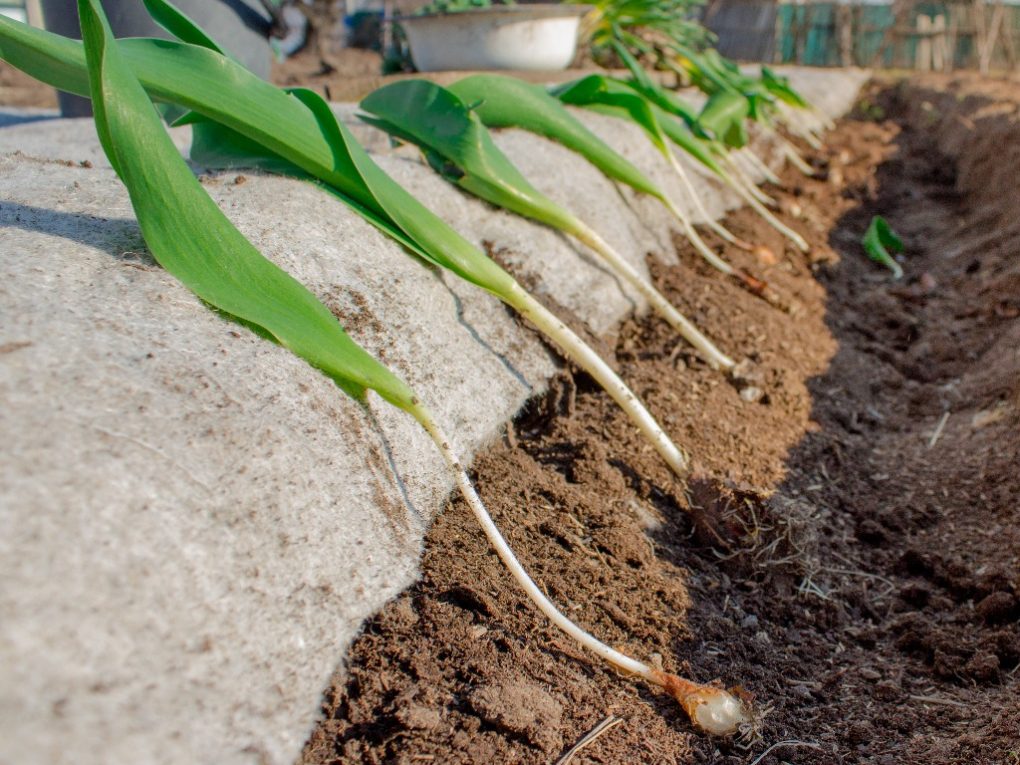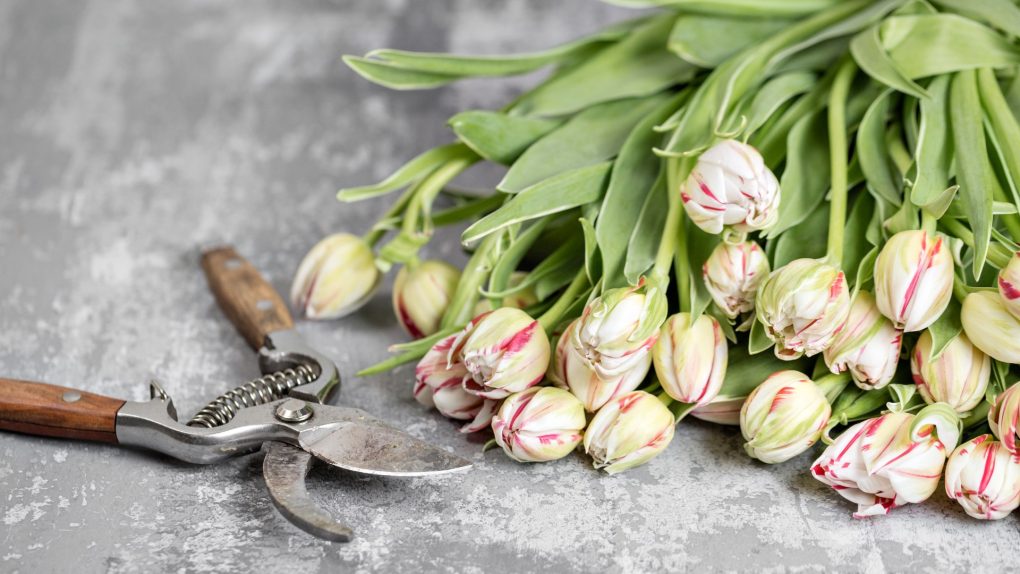Do Tulips Spread: Factors Affecting the Spread of Tulips and How to Deal With It
Yes, according to Conserve Energy Future, tulips spread. However, tulips are not known for spreading rapidly or aggressively like other plants. Under certain conditions, tulips can multiply and spread over time. Tulips grow from bulbs, which can produce offsets or daughter bulbs that develop next to the parent bulb. Over time, these offsets can grow into new plants, resulting in a clump of tulips.

Tulips are a popular flower in various colors and shapes, known for their beauty and elegance, and often used in gardens, bouquets, and home decor. One common question that arises when it comes to tulips is whether they spread or not.
However, it’s worth noting that not all tulips spread at the same rate or in the same way. Some tulips are more likely to multiply and spread independently, while others may require some human intervention. Understanding how tulips spread and what factors affect their spreading can help you make informed decisions about planting and caring for these beautiful flowers.
Table of Contents
Factors That Affect Tulip Spreading
Soil
Soil plays an important role in the growth and health of tulips. Tulips prefer well-drained soil that does not become waterlogged. Poorly drained soil can lead to root rot and other fungal diseases that can limit the growth and spread of tulips.
Tulips grow best in slightly acidic soil with a pH between 6.0 and 7.0. Soil that is too acidic or alkaline can affect nutrient uptake and limit the growth and spreading of tulips. They require a balanced mix of nutrients to grow well, including nitrogen, phosphorus, and potassium. Soil lacking in these nutrients can limit the growth and spread of tulips.
Adding organic matter to the soil, such as compost or well-rotted manure, can help improve soil structure, drainage, and nutrient availability, promoting the healthy growth and spread of tulips. Tulips require a cold period to develop properly, but they also need warm soil for root growth. Planting tulips in soil that is too cold can delay growth and spread.
Sunlight
Sunlight is another factor that can affect the spreading of tulips. Tulips require full sun to grow and flower well, and they may spread less effectively in areas with partial or full shade.

When planted in full sun, tulips receive the light and warmth they need to produce energy through photosynthesis. This energy is used to grow and produce new bulbs, which can lead to spreading over time.
Tulips may not receive enough sunlight in areas with partial or full shade to produce the energy needed for growth and spread. Additionally, shade can lead to damp soil conditions, increasing the risk of fungal diseases that can limit tulip growth and spreading.
Water
Water is another important factor that can affect the spreading of tulips. Tulips require consistent moisture throughout the growing season to promote healthy growth and the development of new bulbs.
Tulips may need more water to support healthy growth and spread in areas with arid climates. On the other hand, areas with excessive rainfall or poor drainage can lead to waterlogged soil, which can rot tulip bulbs and limit their spreading.
To promote healthy growth and spreading, it’s important to ensure that tulips receive consistent moisture throughout the growing season. This can be achieved through regular watering, especially during dry periods, and by ensuring the soil has good drainage to prevent waterlogging.
Temperature
Temperature is another important factor that can affect the spreading of tulips. Tulips are typically grown as spring-blooming bulbs. They require winter dormancy followed by a period of cooler temperatures in the spring to promote growth and flowering.
Tulips may not receive the necessary cool temperatures to promote healthy growth and spreading in areas with mild winters and warm springs. On the other hand, areas with extremely cold winters or late frosts in the spring can damage tulip bulbs and limit their spreading.
To promote healthy growth and spreading, choosing tulip varieties adapted to the local climate and planting zone is important. Tulips generally require a winter dormancy period with temperatures below 50°F (10°C) for several weeks, followed by cooler temperatures in the spring to promote growth and flowering.
Planting Depth
Planting depth is another important factor that can affect the spreading of tulips. Planting tulip bulbs at the correct depth is crucial to ensure healthy growth and promote the development of new bulbs.

If tulip bulbs are planted too shallowly, they may need more nutrients or moisture from the soil, which can limit their growth and spread. Conversely, if tulip bulbs are planted too deep, they may need more sunlight to promote healthy growth and flowering.
In general, tulip bulbs should be planted at 6 to 8 inches (15 to 20 cm) in well-draining soil. This will ensure the bulbs receive enough moisture and nutrients from the soil while providing enough sunlight to promote healthy growth and flowering.
Fertilizer
Fertilizers can also have an impact on the spreading of tulips. Using fertilizers can promote healthy growth, larger bulbs, and more blooms. However, overuse of fertilizers or using the wrong type can cause problems such as excessive foliage growth at the expense of bulb development or weak or malformed bulbs.
To avoid these issues, it’s important to choose the right type of fertilizer and apply it at the appropriate time and in the correct amount. For example, a general-purpose fertilizer with a balanced ratio of nitrogen, phosphorus, and potassium (such as a 10-10-10 or 12-12-12) is usually sufficient for tulips.
Tips to Control Tulip Spreading
Controlling the spreading of tulips can be tricky since they tend to naturalize and multiply independently. However, there are a few things you can do to keep them from spreading too far:

- Deadhead the flowers: Deadheading tulips, as soon as the flowers start to fade, can prevent them from producing seeds and spreading on their own. Use sharp, clean scissors or pruning shears to remove the entire flower stem, leaving the leaves intact.
- Cut back foliage after blooming: After the flowers have bloomed and the foliage has turned yellow or brown, it’s important to cut back the foliage. This helps the bulbs store energy for next year’s growth and prevents them from spreading too much.
- Dig up and divide bulbs: Every few years, it’s a good idea to dig up the bulbs, divide them, and replant them in a new location. This prevents them from becoming too crowded and allows you to spread them out and create a more natural-looking garden.
- Plant in containers: If you’re concerned about tulips spreading too much, consider planting them in containers. This allows you to control their growth and keep them contained in a specific area. Plus, it’s easy to move the containers around and create a different look each year.
